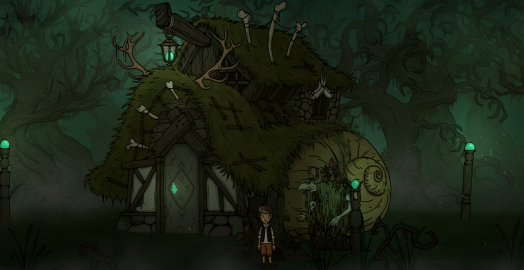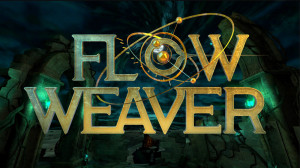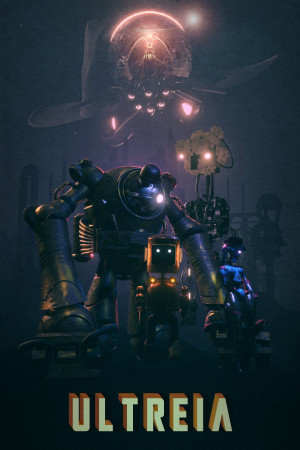Review for Creepy Tale 2

The first Creepy Tale was a complicated beast. Its puzzles were creative and challenging, its story was simple but well told, and it was rich with appropriately spooky atmosphere; troublingly, though, the visual style from which it derived so much of its identity veered dangerously close to out-and-out plagiarism of the artist John Kenn Mortensen. When I reviewed the game I came away hoping the developers would cultivate a style more their own in future projects and use it to showcase their many strengths. I was cautiously optimistic, then, when Creepy Tale 2 was unveiled with graphics that bore only a mild resemblance to its predecessor’s. If Creepy Brothers Studio (formerly Deqaf) could find a more distinctive voice while building on the groundwork laid in their debut, the end result might really be something special.
Unfortunately, that isn’t what happened.
To the developers’ credit, they seem to have listened to criticism around the previous game’s artwork. Mortensen’s influence is still apparent in places, but “influence” is all it is, and on the whole the character and location designs are original and unique. The new art style mostly succeeds on its own merits: the monsters sport inventive, disturbing designs—a human-limbed spider and a blind, snuffling swamp beast are especially memorable—and the menacing woodland landscapes put one in mind of a twisted fairytale. The human characters, too, appear distinct and well realized. The game makes a strong case for the notion that the first one could have gotten by just fine without such liberal imitation of another artist.
In just about every other respect, though, Creepy Tale 2 falls flat. This isn’t for lack of trying: there’s a lot of ambition in evidence here, and the developers appear to have made a conscious effort to do things they haven’t before. Creepy Tale was entirely dialogue free, with its story unfolding mostly through intimation and environmental suggestion; here characters are fully voiced, with each plot development explicated through conversation and the protagonist’s running commentary. Instead of telling another simple, sparsely populated story patterned after a spooky fable, this game, with its sprawling cast of kings, wizards, and cursed princesses, takes its cues from modern fantasy epics. The last game ran for a scant two hours; the sequel lasts around six. It’s clear from the start that the Creepy Brothers wanted their burgeoning series to take its next logical steps; the problem is that many—and maybe even most—of these new decisions feel like steps backward.
To begin with, the narrative here is more involved than its predecessor’s, with the addition of spoken dialogue allowing for more overt examination of its characters, story and world. Players take on the role of Lars, a huntsman’s son whose life is upended when a strange crowned child appears and abducts his sister Ellie. He soon learns from the family house spirit—a dwarf-like being whose job is to secretly look out for the household’s interests—that Ellie’s is but the latest in a series of such kidnappings, and a subsequent chance meeting with the king himself sees Lars charged not only with the girls’ rescue but with the destruction of the mysterious force that stole them.
Unfortunately, it all feels like an attempt to fix something that wasn’t broken. The original game’s straightforward but effective storyline was one of its greatest strengths: you played as a young boy whose brother was stolen by strange beasts, forcing you to journey deeper into the dark woods to save him. Everything else arose out of this basic setup, with each subsequent step of the journey taken in service to a clear objective. Creepy Tale 2 tries to craft a deeper and more complex narrative, but for the most part it only manages to overcomplicate a process that didn’t need the extra steps. Where the earlier game mostly trusted players to pick up on what was necessary as they progressed, here Lars has to visit multiple characters to be told exactly what he needs to do. Having spoken to all of them, however, he comes away with information he already knew: his sister’s been kidnapped by an evil force, and he can’t get her back without confronting it. Everything else just amounts to a lot of filler.
In the previous Creepy Tale, the lack of dialogue never felt like a weakness or a budget-mandated corner-cutting measure; rather, it was essential to what the game was trying to achieve. The wordless, pictographic exchanges enhanced the uncanny atmosphere and sense of oppressive foreboding as the young protagonist moved through a big world without clear rules. Its monsters were frightening in part because they were inexplicable; they not only lacked explanation but seemed at times to defy one. Creepy Tale 2, on the other hand, is full of characters who describe via long expository monologues how the world works, the rules of its magic, and why its monsters are so monstrous. In the process it defangs them, rendering them simple obstacles to be understood, bypassed, and subsequently forgotten. The first game did everything it could to deliver on its title by making you feel like you were on your own in a scary, hostile world; the second undercuts that, repeatedly going out of its way to make sure you know what’s going on and why.
That’s not to say, of course, that a series can’t or shouldn’t try different approaches across installments. If this game told its character-centered tale as effectively as its predecessor’s atmosphere-driven one, it might still have been the follow-up I’d hoped for. Sadly, these characters and their stories aren’t given enough depth or development for that to be the case. As it is, they mostly serve as blunt exposition delivery mechanisms without real personalities, seeming more like pieces of scenery than actual people. A character will be introduced, they’ll tell Lars whatever they’re there to tell him, and then vanish once they’ve served their purpose without so much as another mention. This happens no matter how central to the plot they might initially appear; a fateful interaction with one particular character seems initially poised to introduce a significant turn in the story, only to be apparently forgotten almost as soon as it’s occurred.
Where audio is concerned, at least, Creepy Tale 2 mostly succeeds. As in the original, its eerie synth-orchestral score and evocative sound design is full of creaks, rustles, and distant animal sounds that lend an ominous air to your surroundings. Vocal performances too are mostly effective, especially Lars’s youthful quaver. The choice to cast mostly Slavic-accented actors is a welcome one, helping both to emphasize the story’s cultural roots and to position it even in translation as the work of a Russian team. It’s a refreshing change of pace from the seemingly endless parade of characters in fantasy settings who speak with British accents, and while there are occasional mispronunciations—most notably the repeated vocalization of the “p” in “cupboard”—they’re infrequent enough that I never found them distracting.
The controls are once again easy to master, and the choice of keyboard or gamepad made little difference to me. You move Lars with WASD or the joystick; a dedicated button allows you to interact with a hotspot when prompted, while another allows you to select an inventory item to use there. A third button opens the inventory independently to let you examine the items you have or combine them as necessary. Engaging with a combination lock or other mechanism brings you to a close-up, where the movement controls select between different pieces and the interact button manipulates them. Occasionally you’ll have to perform some physical task like chopping wood, which requires pressing the interact button to begin the action (i.e. raising the axe) and then a second time to complete it (i.e. bringing it back down). This adds little to the experience, but neither does it make things more difficult.
The gameplay is another matter. A few puzzles hit the sweet spot between obvious and obtuse, but for the most part they’re either incredibly simple or nearly impenetrable. A number of traditional inventory tasks involve collecting items and finding a place to use them, but hotspots are often so few and far between that solutions become obvious by default. In many places my scarce options allowed me to progress without figuring out why, in context, Lars would need to act as I was.
Other puzzles involve deciphering a set of complex instructions or intuiting a pattern from limited data. A few of these are nicely clued and cleverly laid out—most notable to me was a summoning ritual Lars has to perform in an abandoned chapel—but for the most part they either drag on through multiple repetitive steps or ask you to extrapolate too much from the scant clues. (One of these barely made sense to me even after consulting a walkthrough.)
By far, though, Creepy Tale 2’s most frustrating challenges are those centered on stealth, speed and agility. (Lars automatically runs or slows down as the situation requires.) The woods are full of nasty creatures looking to make a meal (or worse) of Lars, and being caught usually means instant death so you’ll have to run or hide to avoid them. Sometimes this means finding somewhere out of sight to cower until the threat is past; other situations require you to sneak around by timing an enemy’s patrol pattern, only coming out from cover when their backs are turned or they’re far enough away for you to move unseen. One hair-pullingly unforgiving sequence is basically an elaborate timed puzzle where you run ahead of your pursuer and throw up obstacles to slow it down, abruptly switching directions as it comes closer. Figuring out how the beast moves requires split-second guesswork or, failing that, multiple deaths and restarts.
Though you’ll lose any progress you’ve made toward escape, death on its own isn’t the worst inconvenience, as the game resets automatically by default to the start of the fateful encounter. The problem lies in how long these sequences usually run, and how many times you’ll find yourself moving, standing still, turning back, and then doing it all again until it feels like you’re playing a tedious game of freeze tag. One encounter asks you to swap back and forth between multiple hiding spots to evade a monster, and then, just when you think you’re safe, to repeat the whole process three additional times without making a mistake. And that’s to say nothing of the interminable dexterity-based arcade sequence in the middle of the game which sees you running back and forth with a lantern to beat back hordes of light-sensitive lake monsters.
Despite all these setbacks, I’m not entirely ready to write off Creepy Tale as a series. The first game had an inventive energy to it and demonstrated a clear understanding of how to set a mood, and the second eliminated my most significant complaints about its predecessor’s derivative style. If the developers can just unify the strengths they’ve demonstrated across these two installments, I still think it’s possible for them to hit the target they’re aiming for. Whatever the future may hold, though, Creepy Tale 2 is the game we have right now, and despite a commendable willingness to experiment it's simply too flawed to recommend.

















__medium.jpg)










